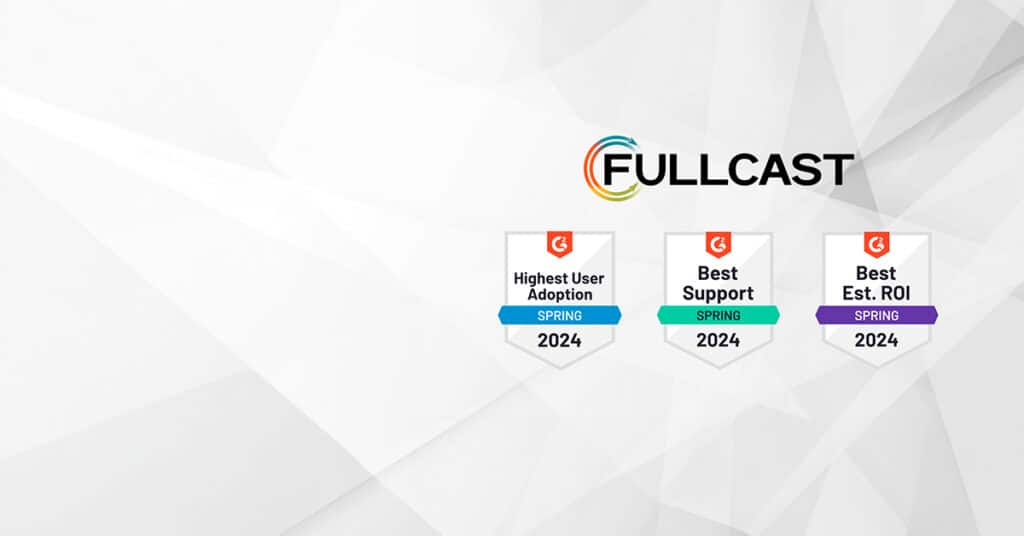The modern era runs on data, so you need to ensure you have policies and regulations in place to manage how the data you collect is stored and shared.
By creating a flexible yet comprehensive data governance strategy sooner rather than later, you can proactively avoid issues later down the line. You can also provide your team with the data they need in an easy-to-access format, so they can focus on their work instead of spending time hunting down documents and sifting through data.
What is Data Governance?
Data governance involves setting up procedures and regulations within your organization designed to facilitate managing, storage, and sharing of data while complying with all relevant data storage regulations. A good data governance strategy prevents resource overlap and is designed to facilitate decision-making and work by transforming how you approach data, transforming it from an afterthought or by-product to a critical asset within your organization.
Though many organizations think of data governance in terms of storage, true data governance also encompasses how data is used and accessed by a variety of departments, including your sales team, and covers everything from data security to retrieval, synchronization, and accuracy.
What is a Data Governance Strategy?
Your data governance strategy defines how data is named, processed, stored, and shared efficiently within your organization. Because data governance redefines how your data is viewed and handled, elevating it from a simple by-product of your applications to a vital company asset, your data governance policy defines the processes and structures used to clean, store, and share this asset, eliminating duplication of resources while facilitating access to vital information by teams and individuals within your organization.
An effective data governance strategy will tell you where data originates from, how and where it is stored, and who has access to it, and is critical for ensuring regulatory compliance.
Being Proactive Instead of Reactive
A good data governance strategy allows your organization to take a proactive, not reactive, approach to your data. Instead of constantly dealing with tickets coming in from your sales reps complaining that data is incorrect or out of date, a good data governance policy ensures all of your data is clean, up to date, and easily accessible by authorized team members. This proactive approach allows your sales team to focus on closing deals and building customer relationships instead of tracking down information and verifying its accuracy.
While many people still view compliance, processes, and policies as restrictive by nature, investing in processes and policies like a good data governance strategy can empower your sales team and your sales ops department1, freeing up more time for tasks that grow your business.
Why Every Organization Needs a Data Governance Strategy in Place
As your organization grows, you are going to gather more data. A solid data governance strategy works like a filing system, making it easy to find and update your data, track where it came from and who has access to it, and keep everything organized. Without a data governance system, your data is more like a pile of files on a desk: a disorganized mess that no one wants to deal with or sort through that gets bigger and messier with each passing day. Investing in a solid data governance strategy means spending a bit of time and effort now to save you and your team a lot of time and effort later.
In our Fireside chat series, we recently sat down with Tyler Simons to learn how to build a data governance strategy designed to help teams identify, fix, and prevent data problems.
You can watch our whole chat here, but here are a few key questions Tyler said every organization should be able to answer:
- What kind of data does each team member, project, or initiative need to achieve their goals or do their job?
- When creating my yearly go-to-market design, what account object or account record data do I need so I can plan effectively?
- What data do my sales reps need to be able to access to do their jobs effectively? Does that information include data that is specific to our industry?
- What information do my sales reps need to go out and sell to any specific account or company? Is that information universal for all of our accounts and companies, or does it vary from client to client?
- What data in each account record will our finance team need to be able to access? How do I ensure they can access that information quickly and easily?
Every organization should keep these questions in mind as they grow and scale and update their answers as needed. Having a data governance policy in place allows you to have that conversation with yourself and the rest of your team, guiding how you approach your data and allowing you to add on to, adjust, or remove whatever information you need to in order to remain proactive.
How to Create a Data Governance Strategy: Tips for Getting Started
Unless you’re a shiny brand-new start-up starting with a clean data slate, chances are you already have data and a bunch of patchwork, ad-hoc policies in place to govern it.
Creating a data governance strategy may feel daunting, so we asked Tyler to share some tips with us for getting started.
Identify Your Key Stakeholders
Begin by identifying your organization’s key stakeholders. Who is responsible for what, and who needs to be held accountable? You should also identify secondary stakeholders who will need to be kept informed of your process and your progress but may not need to be intimately involved in the creation process.
As you work through this process, you will likely identify other key stakeholders who aren’t already involved, so make sure you are continually reviewing who is at the table and who should be added.
Meet with Your Key Stakeholders
Next, set up a meeting with your key stakeholders. You will need to meet with this core group periodically while you craft and refine your data governance strategy, so don’t get too bogged down in the details just yet.
The goal of this first meeting should be to identify what the goal of your data governance policy is and what are some of the principles you want to follow. You can begin to identify and refine these ideas by having a conversation with all your key stakeholders and record that conversation, including everything everyone agrees on and things you don’t have a consensus on, into one document.
Create a RACI Model
A RACI model, also called a RACI chart or RACI matrix, is a diagram that identifies the key roles and responsibilities of users against the major tasks within a project, in this case, the development of your data governance strategy.
RACI charts serve as a visual representation of the functional role each person plays and is a great way to balance workloads and establish decision authority.
Create a Plan
Now that you know who is responsible for what and have established who has decision authority, you need to define your policy. To create an effective data governance strategy, you need to have a solid understanding of your current go-to-market strategy and use that information to inform your data governance policies and strategy by identifying what data you need to accomplish each task or goal (such as setting up an account).
Every organization is different, so there isn’t a one-size-fits-all approach. However, there are a few things all sales organizations should keep in mind.
One of these must-haves Tyler talked to us about is how organizations define accounts and how accounts are created.
- How does your organization define an account?
- Are accounts added by SDRs, AEs, etc.?
- Are accounts added using marketing?
- Are accounts created when someone signs up for your product or service?
Establish Accountability
Once you have identified how accounts are created, you will need to identify who is accountable for what, any reviews that are happening, and any holes that exist in your current data governance policy (or patchwork solution).
Using this information, you can establish your data minimums (what information absolutely has to be provided for each account) and how that data is formatted (for example, is Washington abbreviated to WA?)
Prune Any Junk Accounts & Identify Any Gaps in Your Data
You will also need to identify any bad or junk accounts you have in your system. Not all data is useful, so you need to have criteria for determining which data can be deleted safely and what needs to be held on to. Removing unneeded data from your CRM (customer relationship management system) frees up space and can reduce the cognitive load on your team.
You should also take this opportunity to identify any missing or duplicate data so you can determine how to get the data you need and what data can be pruned.
Once you have a plan, you will be able to identify what gaps exist in your data so that they can be filled.
Meet Periodically & Update Your Data Governance Strategy as You Grow
This policy will need to change and adapt as your company grows, so keep in mind that you should always be looking to the future and planning ahead. If you go from being an SMB to an enterprise-sized organization, what data sets and data sources are important to you will change, and your policy will need to adapt to those changes.
It might help to schedule a recurring meeting to review your data governance strategy and ensure it is continuing to meet your needs, discuss any issues that have arisen since the last meeting, and bring any new stakeholders up to speed.
Clean Your Data
You also need a policy for cleaning your data as it comes in. In this context, cleaning refers to:
- Standardizing what data is collected.
- How data is stored (including how it is formatted).
- Creating a process for removing inaccurate, out-of-date, or unneeded data from your systems.
- Creating a process for getting data into your different accounts.
- Creating a process for deleting junk accounts.
- Determining who is able to access what data.
- Creating an auditing process
- Ensuring you are storing data in a way that ensures compliance with any regulations that apply.
Automating your data cleaning process (removing unneeded data before it is stored) reduces the amount of time your team needs to spend sifting through your data and pruning it. You should also create standards for each department that hold them accountable for the data they own to ensure your data is clean, organized, stored correctly, and being stored in a way that complies with any relevant legislation.
Taking the time to invest in a robust data governance policy that can adapt and change as you grow is critical, freeing up your sales reps to focus on their jobs instead of cleaning up and sifting through massive amounts of data. It can also prevent reps from fighting over accounts by clearly defining how accounts are divided up and who gets which account or territory.
How Can Fullcast Help?
Fullcast is a comprehensive platform for revenue operations that seamlessly connects your strategy and operations and is specifically designed to help you keep your data clean and organized. Fullcast presents your data in an easy-to-use, easy-to-digest format and can help with a variety of critical tasks, including territory and segmentation models, coverage models, and quota and target planning.
For more information, please book your demo.











